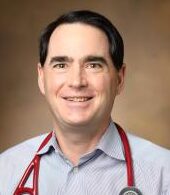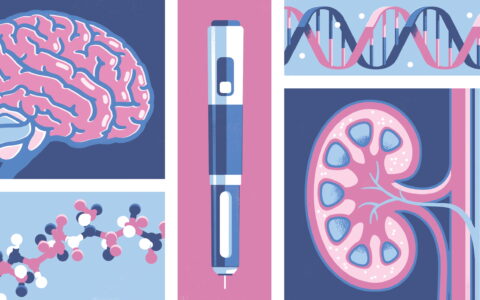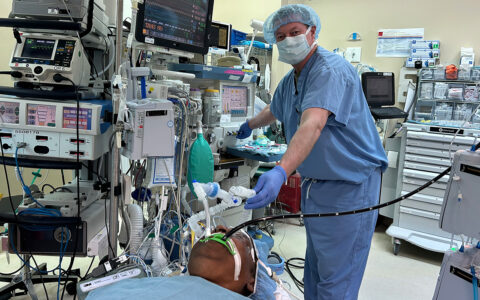Discoveries in Medicine will present a three-part overview of the work of nephrologist William H. Fissell, M.D., who, along with Shuvo Roy, Ph.D., a professor of bioengineering at the University of California San Francisco, is spearheading the development of the first implantable bioartificial kidney from concept through to production.
Fissell, a nephrologist and associate professor of medicine at Vanderbilt University Medical Center, reports that the team’s bioartificial kidney is proving viable in preclinical trials – a medical first. This soda-can-sized implantable device was designed to carry out the primary functions of a natural kidney.
Discoveries in Medicine has tracked the device’s development over the past several years. This is part one of a three-part series where we catch up with Fissell and the progress he is making as the bioartificial organ moves toward the manufacturing stage.
Discoveries: Dr. Fissell, tell us about the dream to create an implantable kidney. How did you come to adopt this ambitious initiative?
Fissell: It started when I was an undergraduate studying astrophysics at MIT. I was working with a team on NASA’s Chandra Observatory, a space-based X-ray telescope, to develop an instrument for Chandra that works like a prism, but for X-rays. That instrument is flying in space today.
During and after my college career when I worked as a 911 paramedic, I decided to pursue a career in medicine and earned my M.D. at Case Western. Seeing patients with kidney disease, I was struck by the immense need and the limits of our present treatments. On top of that, I personally had nine (ultimately successful) surgeries over 30 months to correct a congenital renal system defect. Taken together, these experiences provided a foundation, a motivation, and the science to begin seriously bringing new technologies to the prospect of a bioartificial kidney.
Making Transplant Accessible
Discoveries: How would you characterize the problems the implantable bioartificial kidney, termed iBAK, seeks to solve?
Fissell: Our end goal is a bioengineered, mass-produced, universal-donor kidney to overcome the scarcity problem in kidney transplant. Full stop. We want to rescue people from dialysis or death while waiting for transplantation.
Take a look at the state of renal failure and the solutions we have today. A preponderance of renal failure patients depend on dialysis, about 700,000 of them in the United States and 2.5 to 3 million worldwide. Only about one in six of these patients is even healthy enough to qualify for transplant.
“Our end goal is a bioengineered, mass-produced, universal-donor kidney to overcome the scarcity problem in kidney transplant. Full stop.”
Right now, there are roughly 100,000 patients on the transplant list, but due largely to organ scarcity, only about 20,000 transplants are performed a year. Add to this the fact that we have around 105,000 new renal failure cases a year, and you can see there is a huge mismatch between need and fulfillment of that need.
When you see that only 12 percent of those on the waitlist get a kidney, it becomes clear that kidney transplant is not a realistic solution to the problem.
Dialysis comes with its own burdens. There’s the inconvenience of thrice weekly, 3- to 5-hour sessions. There are repeated admissions to hospitals for infections and heart problems. There’s a dependency on others, which patients can find overwhelming and discouraging. There is constant fatigue, a very restricted diet, and travel is difficult.
“When you see that only 12 percent of those on the waitlist get a kidney, it becomes clear that kidney transplant is not a realistic solution to the problem.”
One patient with kidney failure described it like this: “I could not be the kind of husband to my wife, father to my children, or provider for our family that I wanted and needed to be … the awful fate of being half a man.”
Transplantation can rescue people from this situation. A bioengineered transplant like the iBAK will provide the waste excretion and fluid balance functions that a transplant does.
Straightforward Procedure
Discoveries: What would be the patient’s experience in having an iBAK implantation?
Fissell: The iBAK will be implanted just like a kidney transplant, connected to the iliac vessels and draining to the urinary system. Replacement will be simple: disconnect the old one from the vascular grafts and connect the new one. The idea is a bit like how pacemakers are managed: the leads generally stay where they are, but the generator can be replaced as an outpatient minor procedure.
For the physician, there’s the one-time surgery to attach the vascular grafts to the patient’s own blood vessels, and then connecting the cartridge is much easier. We hope that eventually this could become an outpatient ambulatory surgery as well.
Bioartificial vs. Xenograft
Discoveries: Are there other innovations that may solve the dialysis problem?
Fissell: The University of Alabama is working on kidney xenografts from pigs with promising results.
One key advantage with the iBAK, though, is that you don’t have rejection issues. With either an animal or natural human kidney, the patient is on strong immunosuppressants because of rejection risks. Yet these risks are worth it for all the functions it provides.
But whether a xenograft is a riskier proposition for rejection, requires more immunosuppression, or poses greater risks of cancer or heart disease is still unknown.
Ongoing Studies
Discoveries: Where are you now in the testing of the iBAK?
Fissell: We are in preclinical trials now to make sure there is no clotting over time. So far, we are seeing no issues that raise concerns.
NEXT: Challenges Overcome in Creation of Bioartificial Kidney





